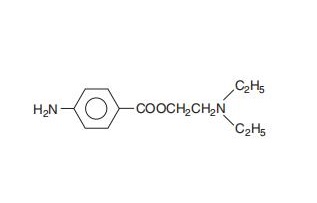Benzocaine-----Uses as a Local anaesthetic
Sep 25,2020
General Introduction
Benzocaine is one of the more common and widely used topical anesthetics. It is available in gel, cream, ointment, lozenge, liquid solution, spray, and patch. It exists almost entirely in its base form, making absorption into circulation slow and therefore having a very low potential for systemic toxicity in healthy individuals.
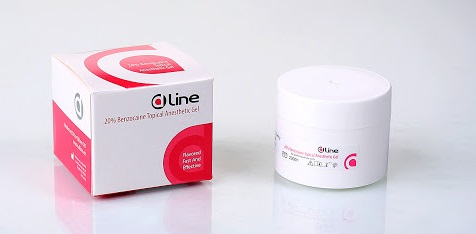
• Classification: Benzocaine is an ester.
• Available concentration: The most commonly used concentration used in dentistry is 20%, although it is available in concentrations ranging from 6% to 20%.
• Onset of action: Rapid. Onset can occur as early as 30 seconds and have its peak effect at 2 minutes.
• Duration: 5 to 15 minutes.
• Maximum recommended dose: There are no published maximum dosage recommendations.
• Metabolism/excretion: Benzocaine is metabolized via hydrolysis in the plasma and to a lesser extent in the liver by cholinesterase. Excretion occurs primarily through kidneys with only a small portion remaining unchanged in the urine.
• Pregnancy/lactation: FDA Category C/Excretion in breast milk unknown, use with caution.
• Special considerations: Methemoglobinemia has been reported following topical anesthesia use of benzocaine, particularly with higher concentrations of 14% to 20% spray applications applied to the mouth and mucous membrane. Always apply as directed. Benzocaine should not be used on children younger than 2 years of age.
Local Anesthesia Injection
Step 1 Review medical and dental history.
Step 2 Set-up armamentarium.
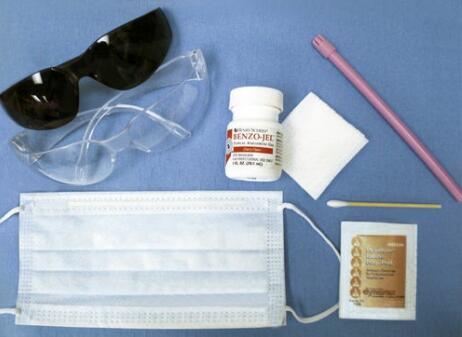
2 × 2 gauze
Cotton tip applicator
Saliva ejector
Topical anesthetic
Topical antiseptic (optional)
Personal protective equipment (PPE) and patient safety eyewear
Step 3 Have on all PPE and make sure patient is wearing protective eyewear.
Step 4 Place patient in supine position.
Step 5 Prepare cotton tip applicator with proper amount of topical anesthetic.
Remember: only a small amount is necessary to achieve the desired results.
Step 6 Perform intraoral inspection of the areas where topical anesthesia is to be placed. Assess area for abrasions, lacerations, or any trauma that would affect absorption and increase risk for toxicity.
Step 7 Identify landmarks. Using 2 × 2 gauze, gently wipe the area dry, removing any debris from the area.
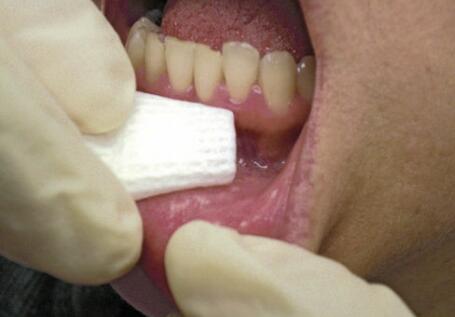
Step 8 (Optional) Wipe area using a topical antiseptic such as Betadine (povidone-iodine). This step helps decrease the risk for infection, but is considered optional.
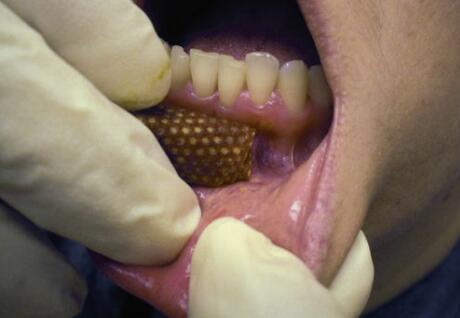
Step 9 Place topical anesthesia at site of penetration. Leave in place for 1 to 2 minutes to ensure effectiveness.
Step 10 Remove cotton tip applicator, provide suction as necessary, and continue with the injection.
Indications and Usage
Benzocaine is a colorless trapezial crystal. Its melting point is 92℃ (88-90℃), boiling point is 183-184°C (1.87kPa). 1g of this drug is soluble in about 2500ml water, 5ml ethanol, 2ml chloroform, 4ml ether or 30-50ml almond oil and olive oil, and it is also soluble in dilute acid. It is stable in air, odorless, and slightly bitter.
Benzocaine is a lipid-soluble surface anesthetic, and it weaker than other local anesthetics such as lidocaine and tetracaine, so it will not cause any discomfort due to its anesthetizing effects when acting on mucosa. Benzocaine is a type of drug with relatively strong lipid-solubility and will bind with mucosa and the fatty layer of skin, but it will not easily penetrate into the body and cause poisoning. Benzocaine can be used as a precursor for Ossur imitation, orthocaine, and procaine. It is also used as a local anesthetic and can stop pain and itching. It is mainly used in pain and itch prevention on wounds, ulcer surfaces, mucous membrane surfaces and hemorrhoids. Its paste form can also lubricate and stop pain for the nasopharynx and endoscope. Benzocaine’s aural solution is used to alleviate acute congestion, concentrated otitis externa, and the pain and itching of swimming otitis. Benzocaine is also effective for toothaches, sore throat, oral ulcers, all kinds of hemorrhoids, anal fissures, and vulvar itching. Benzocaine can be used as a male sex organ numbing agent to slow ejaculation. It can also be used as a numbing lubricant for the pharynx and endoscope, and it can be used as a UV absorbing agent for cosmetics.
- Related articles
- Related Qustion
- Benzocaine: Mechanism of Action,Uses,Toxicity Mar 31, 2023
Benzocaine is an ester local anesthetic commonly used as a topical pain reliever or in cough drops.
Leuprorelin/Leuprolideacetate (LA) is a highly active analogue (LHRH-A, GnRHA) of luteinizing hormone releasing hormone (LHRH, or gonadotropin releasing hormone, GnRH) produced by the hypothalamus.....
Sep 25,2020APIProcaine hydrochloride is used as the sole local anesthetic agent for pain control in dentistry, as it was from its introduction in 1904 until the introduction of the amide local anesthetic lidocaine in the late 1940s。....
Sep 27,2020Antineoplastic agentsBenzocaine
94-09-7You may like
- Benzocaine
-

- $1.00 / 1kg
- 2024-05-21
- CAS:94-09-7
- Min. Order: 1kg
- Purity: 99%
- Supply Ability: 1000kg
- benzocaine
-

- $30.00 / 1kg
- 2024-05-21
- CAS:94-09-7
- Min. Order: 1kg
- Purity: 98%
- Supply Ability: 2000kg
- Benzocaine
-

- $1.00 / 1KG
- 2024-05-21
- CAS:94-09-7
- Min. Order: 1KG
- Purity: 99%
- Supply Ability: 500KG




